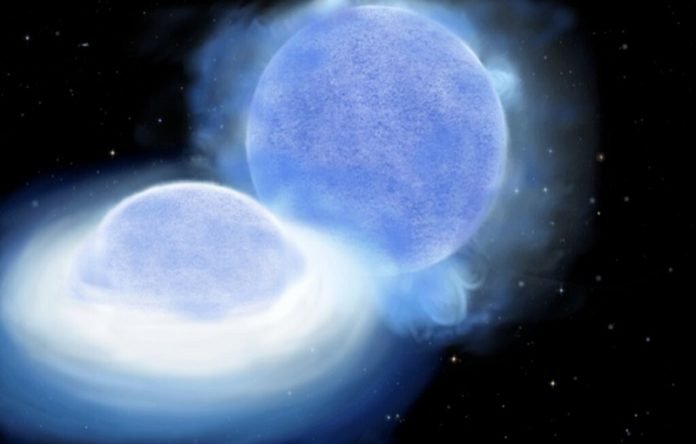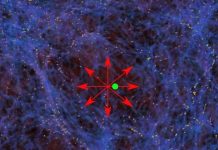
Scientists at Heidelberg University’s Center for Astronomy have made an incredible discovery that sheds light on the mysterious journey of stars.
Dr. Varsha Ramachandran and her team have found the first-ever “stripped” star of intermediate mass, uncovering a missing piece of the stellar evolution puzzle.
This breakthrough has significant implications for our understanding of the origin of precious heavy elements like silver and gold.
Stars known as “stripped stars” have shed most of their outer layers, revealing their hot and dense core rich in helium.
These stars are commonly found in binary systems, where the gravitational force of one star strips away and accumulates matter from its companion.
In the past, scientists were aware of low-mass stripped stars called subdwarfs, as well as their massive counterparts called Wolf-Rayet stars.
However, until now, the missing link known as “intermediate-mass stripped stars” had remained elusive, leaving astronomers questioning their existing theories.
Using advanced spectroscopy devices on the Very Large Telescope in Chile, Dr. Ramachandran and her colleagues observed a suspicious spectrum from a massive star previously classified as a single object.
Further investigation revealed that it was actually a binary system consisting of the intermediate-mass stripped star and a fast-rotating companion, known as a Be star. The Be star had been spun-up by accumulating mass from the stripped-star progenitor.
This extraordinary system resides in the Small Magellanic Cloud, a neighboring dwarf galaxy.
The stars in this galaxy have fewer heavy elements than those in our Milky Way, offering a unique window into the chemical evolution of the universe and our own galaxy’s past.
The newly discovered stripped star system plays a crucial role in connecting various exotic objects in the universe’s evolutionary chain.
According to stellar evolution models, the stripped star will explode as a stripped-envelope supernova in approximately one million years, leaving behind a neutron star remnant.
This finding not only highlights the first-ever stripped star found in a metal-poor galaxy but also offers insight into the formation of double neutron star mergers—the awe-inspiring cosmic events responsible for the creation of elements like silver and gold.
Understanding the journey of these stars is a major challenge in astrophysics, and observations of intermediate stages are vital to unraveling this cosmic mystery.
Dr. Ramachandran explains that their discovery challenges previous assumptions about stripped stars. Rather than completely losing their outer layers, these stars retain a small amount of hydrogen on top of their helium cores.
As a result, they appear larger and cooler than they truly are, earning the name “partially stripped stars.” Only detailed analysis using high-resolution data and computer models can reveal their true nature, as they closely resemble normal hot stars.
The significance of this discovery cannot be overstated. It offers the first direct insights into how mass transfer occurs in massive star systems, providing a major puzzle piece in the quest to understand these captivating celestial phenomena.
By unlocking the secrets of these hidden stars, scientists are unlocking the mysteries of the universe itself. The fascinating journey of stars holds the key to understanding the formation of precious elements and the spectacular cosmic events that shape our universe.
The study was published in Astronomy & Astrophysics.
Follow us on Twitter for more articles about this topic.



